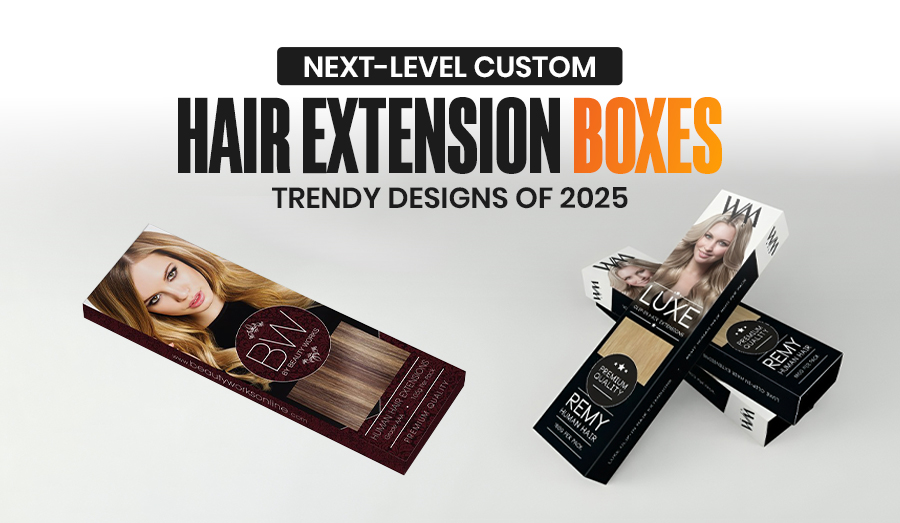- FREE SHIPPING On all orders
- SUPPORT 24/7 We support online 24 hours a Day
Is your custom packaging stuck in the past and do you want boxes that pop? You are at the right place. Product packing is an ever-changing field. If you look at the history of packing, the oldest known type is ‘Flexible packaging.’ Chinese people used mulberry bark to wrap foods in the 2nd or 1st BC. As this technique was widespread, flax fibers were used for packaging.
With time, the commercialization of paper boxes started in 1844. By the end of 1867, paper-based packaging for products had become a fully grown market globally. In the mid-20s, plastics, metals, and glass were also started to be used for this purpose. Similarly, famous brands started using labels for information and brand engagement.
As we often say, the 21st century is the era of innovation. The field of custom packaging has seen significant changes, especially in recent years and continuing into 2024. This article will throw light on the latest trends in custom packaging design. Let’s explore these exciting developments.
This is one of the key insights. Due to activities like fossil burning or plastic waste, the environment has been polluted to a huge extent. Therefore, brands are giving special concern to sustainability. Let’s have a look at what brands have done for this cause:
Brands are choosing materials that have the least effect on the habitat. The use of degradable items, recycled materials, and reusable boxes comes into the spotlight. Examples of green materials include bioplastics, cardboard, wood, Kraft, Hemp, etc.
There is a growing trend in using bioplastics, compostable materials, and plant-based packing. People like to buy items that support eco-friendly efforts as it is seen as a good thing to do. 62% of clients always buy a product that adds to the environment.
Although storytelling is not the latest trend, ongoing R&D is buzzing in this field. As per social identity theory in the Journal of Marketing Analytics, storytelling improves the cognitive acts of people and induces emotional responses in them. This leads to a strong bond between buyers and the brands.
Here’s how it works:
Why Does It Matter?
The question is why is it crucial to create feelings in the customers? As per a review study on Research Gate, the emotional link gives the following benefits to a brand:
Here is a detail of some factors that show why the emotional link is important:
Merging AI is the process of involving AI features in existing systems. It is a planned deal to ensure that AI efforts are in harmony with the brand. In fact, it is one of the best ways to ensure that you get the ideal package for your items.
Here is how AI can play its role in the packing of rigid boxes wholesale:
Challenges:
However, it is not always easy to incorporate AI in your brand optimization. Here are some issues that you may face during this process:
Minimalism is a trend that started a couple of years ago. Stats show a massive 92% of clients love the simple design. The following are some latest trends in this field:
To make your box stand out in the competition, you have to think out of the box. How about using creativity and indulging in some unorthodox designs? Below is a glimpse at the latest design ideas:
As they say, if you have good marketing and an average product, it would never flop compared to an item that is great with average marketing. Over the past few years, brands have given special focus to the custom packaging to increase their visibility and to get more leads. They can use ideas like ethics, storytelling, AI integration, and simple design. As a result, an item with better marketing is getting more clients, and soaring the revenue.
If you have any bold ideas about the product box or want some new tips on how to level your packing, CPP Boxes is your next shot. To cope with the high demands, they have a strong R&D unit. Thanks to their creative ideas, they ensure the first mover advantage by taking the lead in the latest designs.
GET YOUR QUOTE






Blake Harper is an experienced and dedicated packaging engineer with a deep passion for creating innovative, sustainable, and cost-effective packaging solutions. He holds a degree in Packaging Engineering, where he gained a strong foundation in materials science, product design, and manufacturing processes. With years of hands-on experience, Blake has honed his skills in optimizing packaging designs for a wide range of industries, including consumer goods, electronics, and food packaging.
Currently, Blake has been with CPP Boxes, a leading packaging solutions provider, for several years, where he has played a key role in designing packaging that balances functionality, cost efficiency, and sustainability. His work at CPP Boxes has involved designing protective packaging, improving supply chain logistics, and developing eco-friendly solutions that reduce waste and environmental impact.
Blake's expertise lies in selecting the right materials, creating structural designs that maximize protection and minimize costs, and ensuring that packaging meets both consumer expectations and industry standards. His approach integrates creativity with technical know-how, always striving for solutions that are both practical and innovative.
Passionate about environmental sustainability, Blake is always exploring new ways to incorporate eco-friendly practices into his work. He is committed to advancing packaging technologies and methodologies that reduce waste, improve recyclability, and contribute to a more sustainable future. Throughout his career, Blake has become known for his strong problem-solving skills, attention to detail, and his ability to collaborate effectively with cross-functional teams to meet project goals.